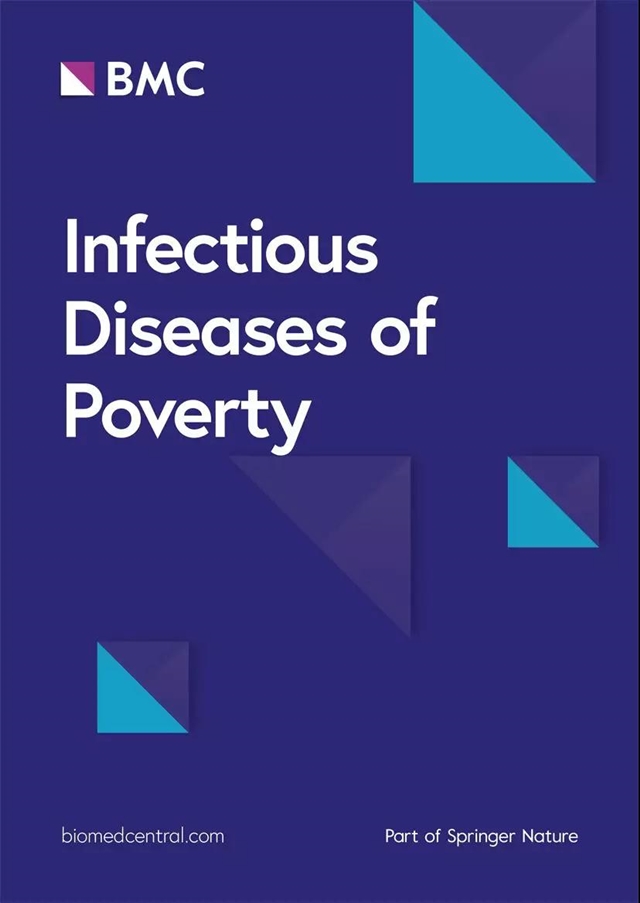Global patterns of syphilis, gonococcal infection, typhoid fever, paratyphoid fever, diphtheria, pertussis, tetanus, and leprosy from 1990 to 2021: findings from the Global Burden of Disease Study 2021
IF 5.5
1区 医学
Q1 INFECTIOUS DISEASES
引用次数: 0
Abstract
Certain infectious diseases are caused by specific bacterial pathogens, including syphilis, gonorrhea, typhoid and paratyphoid fever, diphtheria, pertussis, tetanus, leprosy, and tuberculosis. These diseases significantly impact global health, contributing heavily to the disease burden. The study aims to thoroughly evaluate the global burden of syphilis, gonorrhea, typhoid and paratyphoid fever, diphtheria, pertussis, tetanus, and leprosy. Leveraging the Global Burden of Disease (GBD) study 2021, age-specific and Socio-demographic Index (SDI)-specific incidence, disability-adjusted life-years (DALYs), and death for eight specific bacterial infections across 204 countries and territories from 1990 to 2021 were analyzed. Percentage changes in age-standardized incidence rate (ASIR), DALY rate, and mortality rate (ASMR) were also examined, with a focus on disease distribution across different regions, age groups, genders, and SDI. By 2021, among the eight diseases, gonococcal infection had the highest global ASIR [1096.58 per 100,000 population, 95% uncertainty interval (UI): 838.70, 1385.47 per 100,000 population], and syphilis had the highest global age-standardized DALY rate (107.13 per 100,000 population, 95% UI: 41.77, 212.12 per 100,000 population). Except for syphilis and gonococcal infection, the age-standardized DALY rate of the remaining diseases decreased by at least 55% compared to 1990, with tetanus showing the largest decrease by at least 90%. Globally, significant declines in the ASIR, age-standardized DALY rate, and ASMR for these eight bacterial infections have been observed in association with increases in the SDI. Regions with lower SDI, such as sub-Saharan Africa, experienced a relatively higher burden of these eight bacterial infections. Although there has been an overall decline in these eight diseases, they continue to pose significant public health challenges, particularly in low SDI regions. To further reduce this burden in these areas, targeted intervention strategies are essential, including multi-sectoral collaboration, policy support, improved WASH management, and enhanced research efforts.1990 至 2021 年梅毒、淋球菌感染、伤寒、副伤寒、白喉、百日咳、破伤风和麻风病的全球模式:2021 年全球疾病负担研究的结果
某些传染病是由特定细菌病原体引起的,包括梅毒、淋病、伤寒和副伤寒、白喉、百日咳、破伤风、麻风病和结核病。这些疾病严重影响全球健康,给疾病造成沉重负担。这项研究旨在全面评估梅毒、淋病、伤寒和副伤寒、白喉、百日咳、破伤风和麻风病的全球负担。利用 2021 年全球疾病负担(GBD)研究,分析了 1990 年至 2021 年期间 204 个国家和地区中八种特定细菌感染的年龄特异性和社会人口指数(SDI)特异性发病率、残疾调整生命年(DALYs)和死亡率。此外,还研究了年龄标准化发病率(ASIR)、残疾调整生命年(DALY)和死亡率(ASMR)的百分比变化,重点关注不同地区、年龄组、性别和 SDI 的疾病分布情况。到 2021 年,在这八种疾病中,淋球菌感染的全球 ASIR 最高[每 10 万人 1096.58 例,95% 不确定区间:每 10 万人 838.70 例,1385.47 例],梅毒的全球年龄标准化 DALY 率最高(每 10 万人 107.13 例,95% 不确定区间:每 10 万人 41.77 例,212.12 例)。与 1990 年相比,除梅毒和淋球菌感染外,其余疾病的年龄标准化残疾调整寿命年率至少下降了 55%,其中破伤风下降幅度最大,至少下降了 90%。在全球范围内,随着 SDI 的增加,这八种细菌感染的 ASIR、年龄标准化残疾调整寿命年率和 ASMR 都出现了显著下降。撒哈拉以南非洲等 SDI 较低的地区,这八种细菌感染的负担相对较高。虽然这八种疾病的发病率总体上有所下降,但它们仍对公共卫生构成重大挑战,特别是在 SDI 较低的地区。为了进一步减轻这些地区的负担,必须采取有针对性的干预战略,包括多部门合作、政策支持、改善讲卫生运动的管理和加强研究工作。
本文章由计算机程序翻译,如有差异,请以英文原文为准。
求助全文
约1分钟内获得全文
求助全文
来源期刊

Infectious Diseases of Poverty
Medicine-Public Health, Environmental and Occupational Health
CiteScore
16.70
自引率
1.20%
发文量
368
审稿时长
13 weeks
期刊介绍:
Infectious Diseases of Poverty is a peer-reviewed, open access journal that focuses on essential public health questions related to infectious diseases of poverty. It covers a wide range of topics and methods, including the biology of pathogens and vectors, diagnosis and detection, treatment and case management, epidemiology and modeling, zoonotic hosts and animal reservoirs, control strategies and implementation, new technologies, and their application.
The journal also explores the impact of transdisciplinary or multisectoral approaches on health systems, ecohealth, environmental management, and innovative technologies. It aims to provide a platform for the exchange of research and ideas that can contribute to the improvement of public health in resource-limited settings.
In summary, Infectious Diseases of Poverty aims to address the urgent challenges posed by infectious diseases in impoverished populations. By publishing high-quality research in various areas, the journal seeks to advance our understanding of these diseases and contribute to the development of effective strategies for prevention, diagnosis, and treatment.
 求助内容:
求助内容: 应助结果提醒方式:
应助结果提醒方式:


